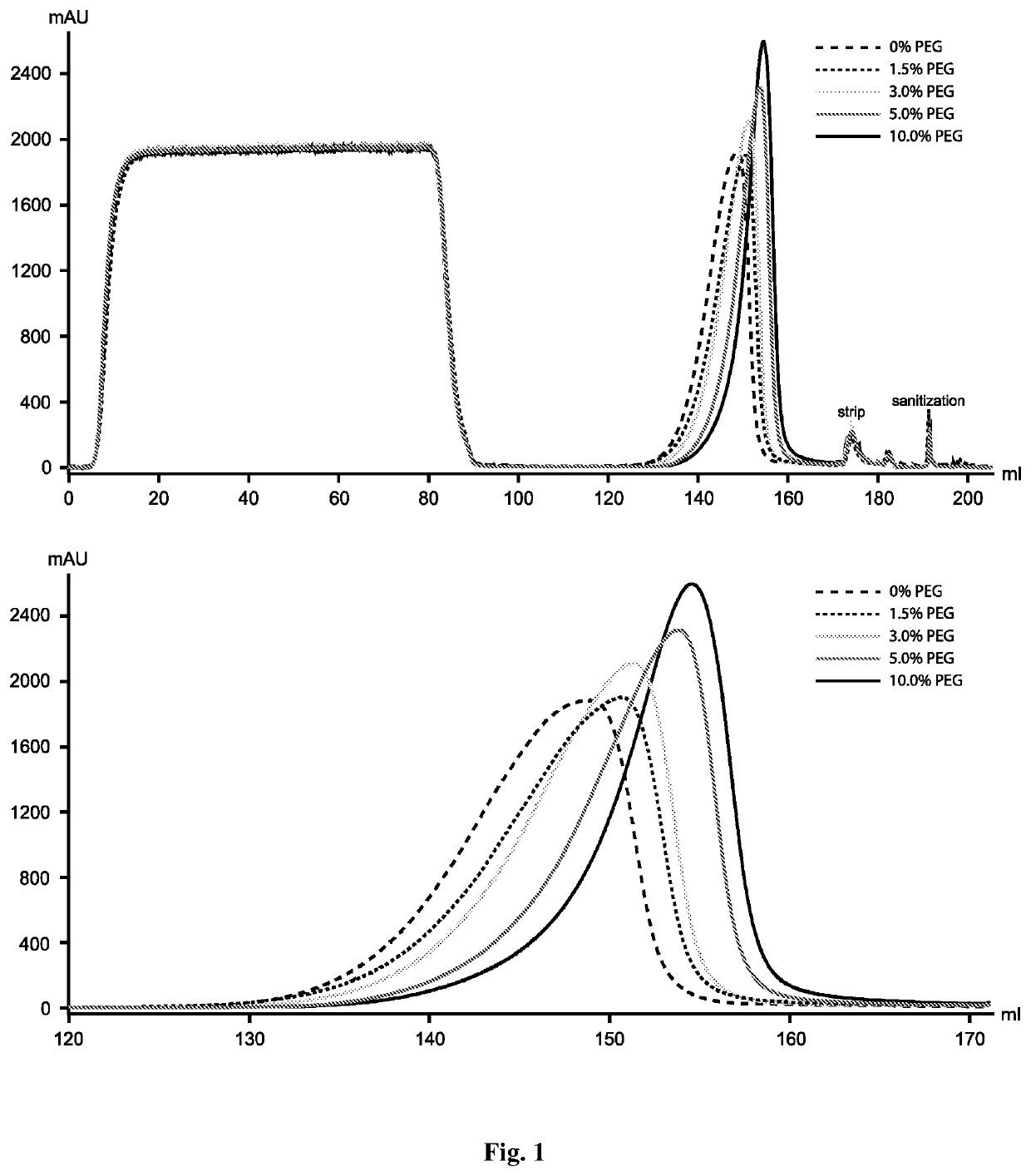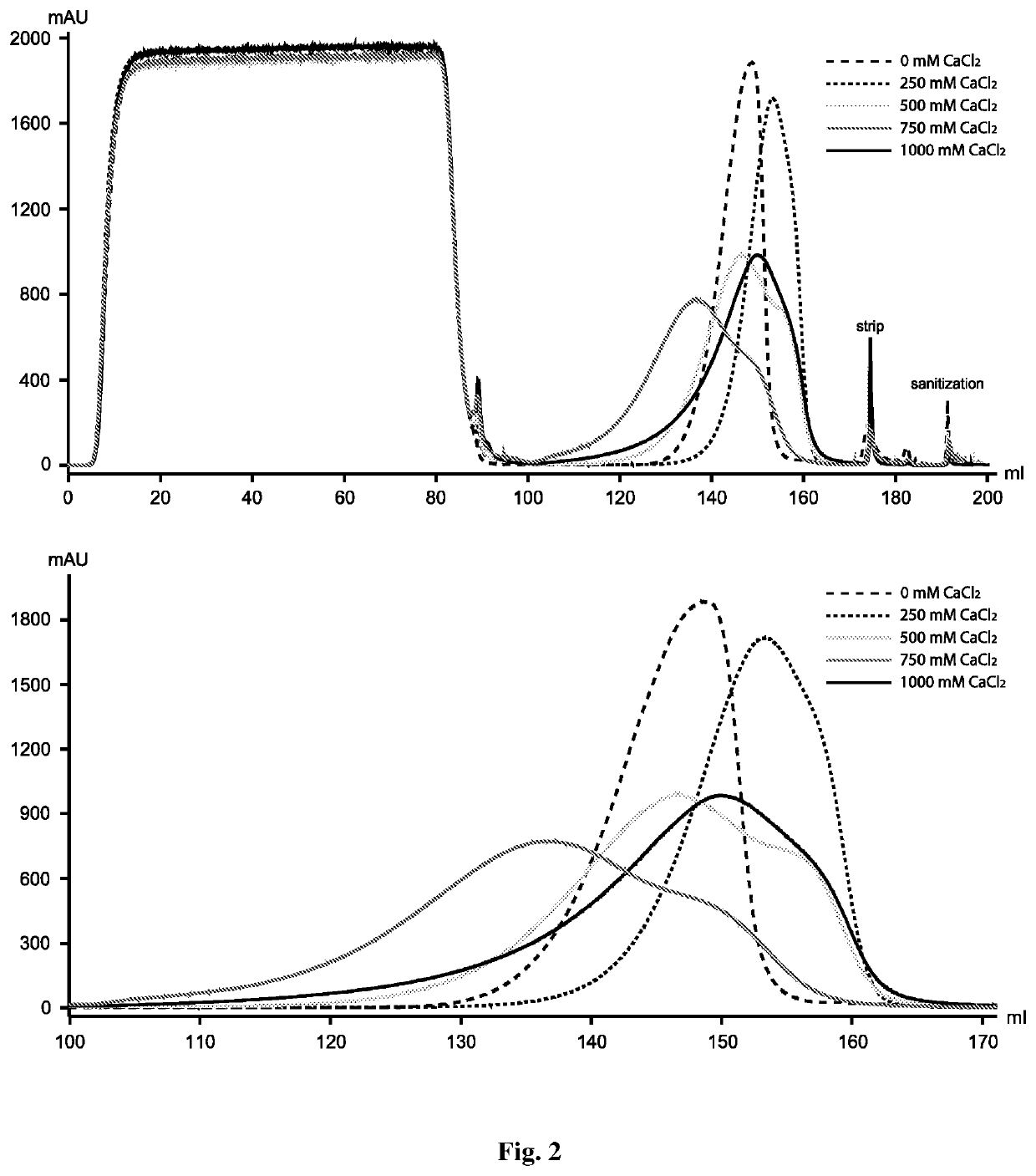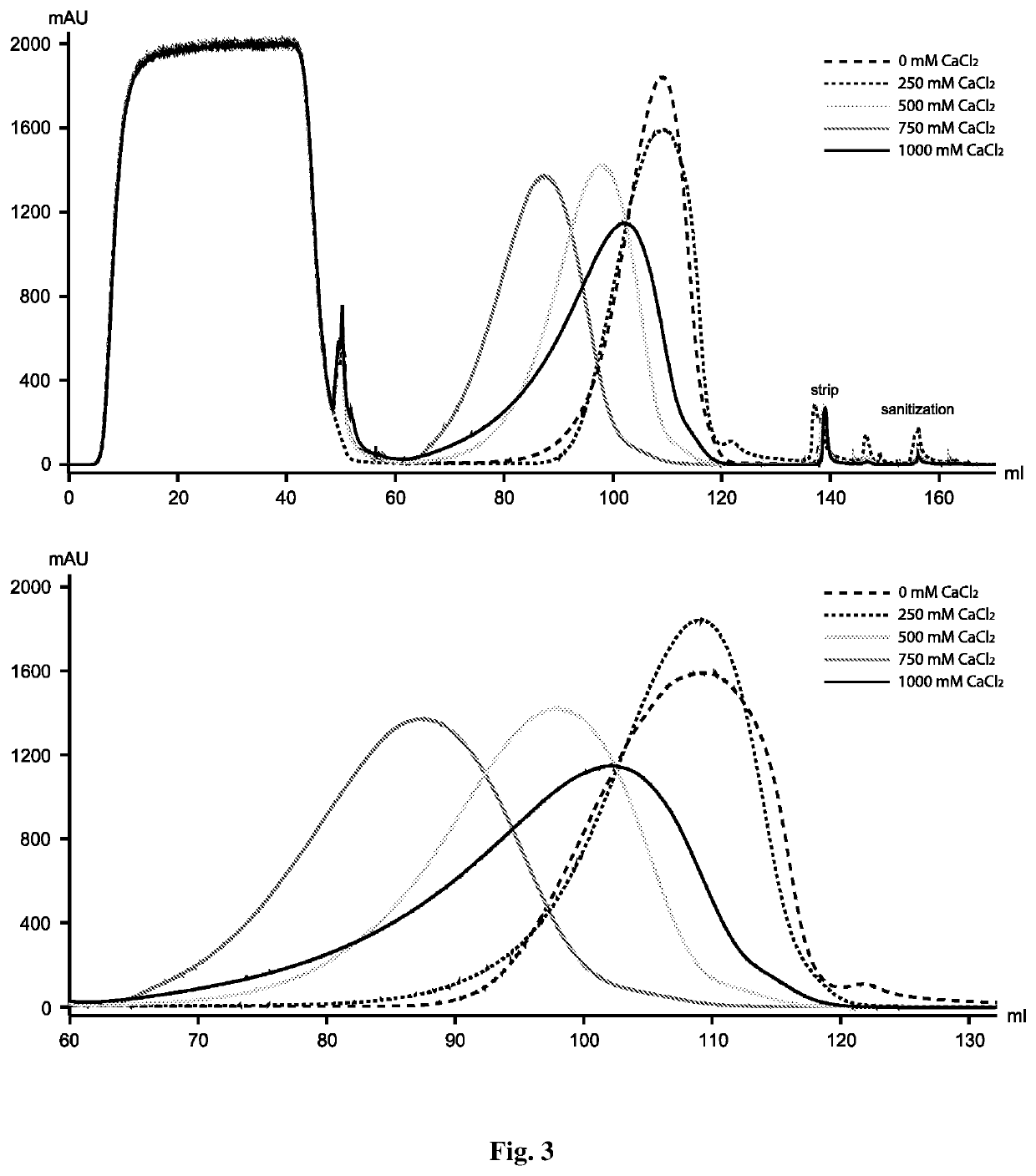A method for improving aggregate removal by Protein A chromatography
a protein chromatography and aggregate technology, applied in the field of protein chromatography, can solve the problems of unfavorable reliance on a single step for aggregate removal, adjusting elution ph alone is not sufficient for good separation, and protein chromatography under typical conditions is less effective at removing aggregates. the ability to remove aggregates is improved, the burden of subsequent polishing steps is less, and the overall robustness of the downstream process is improved.
- Summary
- Abstract
- Description
- Claims
- Application Information
AI Technical Summary
Benefits of technology
Problems solved by technology
Method used
Image
Examples
example 1
PEG on Protein a Elution Profile
[0057]In this study, we first investigated PEG's effect on Protein A elution profile by adding different amounts of PEG (i.e., 1.5%, 3%, 5% and 10%) to wash and elution buffers. With increasing PEG concentration, retention of the aggregation-prone antibody was slightly increased and the elution peak became sharper (FIG. 1). However, different from what is observed on other types of columns (e.g., ion exchange, hydrophobic interaction and mixed-mode) PEG (up to 10%) showed no effect on monomer-aggregate resolution on the Protein A column. This observation explains the lack of pervious report on the application of PEG in Protein A chromatography for aggregate removal.
example 2
Calcium Chloride on Protein a Elution Profile
[0058]The inventors designed experiments to explore the effect of calcium chloride on monomer-aggregate resolution as a mobile phase additive. For the case under study, different amounts of calcium chloride (i.e., 250 mM, 500 mM, 750 mM and 1 M) were added to Protein A wash and elution buffers.
[0059]Adding calcium chloride to the mobile phase showed appreciable but not significant impact on both resolution and retention time (FIG. 2). At low concentration (i.e., 250 mM), calcium chloride had little effect on resolution and the elution peak was similar to that of the control run without the salt (in both cases, the elution peak is relatively sharp). Nevertheless, calcium chloride slightly increased the target protein retention time at this concentration. At increased concentrations (i.e., 500 mM and 750 mM), calcium chloride showed a small effect on resolution. Under these two conditions, the elution peak became broader and contained an ob...
example 3
ic Effect of PEG and Calcium Chloride on Protein a Resolution
[0061]Although calcium chloride at 500 mM and 750 mM improves monomer-aggregate resolution, separation of the two species is far from complete under these conditions. Thus, the inventors next tried PEG / calcium chloride combination. Since PEG itself had little effect on the elution profile at different concentrations, in this study the inventors arbitrarily chose 5% PEG to combine with different amounts of calcium chloride. At low calcium chloride concentrations (i.e., 150 mM and 250 mM), this combination showed no obvious effect and the elution profile is almost identical to that of the run with 5% PEG only (FIG. 4A). However, the combination of 500 mM calcium chloride and 5% PEG showed a remarkable synergistic effect, resulting in significantly improved separation of monomer from aggregates (FIG. 4B). The monomer in the eluate was improved from 80% (control run whose wash 2 and elution buffers contained neither PEG nor ca...
PUM
| Property | Measurement | Unit |
|---|---|---|
| Fraction | aaaaa | aaaaa |
| Fraction | aaaaa | aaaaa |
| Mass | aaaaa | aaaaa |
Abstract
Description
Claims
Application Information
 Login to View More
Login to View More - R&D
- Intellectual Property
- Life Sciences
- Materials
- Tech Scout
- Unparalleled Data Quality
- Higher Quality Content
- 60% Fewer Hallucinations
Browse by: Latest US Patents, China's latest patents, Technical Efficacy Thesaurus, Application Domain, Technology Topic, Popular Technical Reports.
© 2025 PatSnap. All rights reserved.Legal|Privacy policy|Modern Slavery Act Transparency Statement|Sitemap|About US| Contact US: help@patsnap.com



